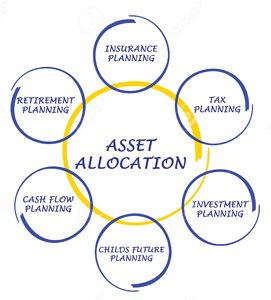“Where you invest is just not enough,
How you invest is what makes you tough,
Skilled sailors are made only when the sea is rough”
I hope the readers of my earlier column are adequately insured by now. Since you have safeguarded your family and yourself with Life Insurance covered in last time’s PT issue, the next step towards investing is to comprehend the essence of ‘Asset Allocation’.
Asset allocation to investments is what a bun-muska chai is to an Irani restaurant, a very critical aspect of portfolio management. Asset Allocation is the backbone of any financial planning and unfortunately one of the most neglected subjects in the world of investments. Did you know that asset allocation determines over 90% of the portfolio returns and the rest is due to product selection and timing of investments? It supersedes product selection and market opportunities.
As per book definition, Asset allocation is the diversification of funds across different asset classes, based on the individual’s age, risk-appetite and time horizon. By ‘asset class’, I mean ‘low-risk, low-returns and high-risk, high-returns’ products like Fixed Deposits, PPF, Tax Free Bonds, Stocks, Mutual Funds, Gold, Real Estate, etc. Let me explain…
Asset Allocation takes into account the following 3 criteria:
1. Age: Is instrumental in deciding asset allocation. The rule of thumb is that the investor’s a ge determines the percentage exposure into ‘low-risk-low-return’ assets (debt instruments like FD, PPF, Post Office, etc) and ‘high-risk-high-return’ assets (Equity Stocks, Equity MFs, etc) At my 37 years of age, my exposure into safe avenues (debt) should be 37% and balance 63% can be deployed into high-risk-high-return products (equity). In short, the older I get, the higher should be my exposure into safe instruments, this is because my earning years will subsequently reduce as I age.
ge determines the percentage exposure into ‘low-risk-low-return’ assets (debt instruments like FD, PPF, Post Office, etc) and ‘high-risk-high-return’ assets (Equity Stocks, Equity MFs, etc) At my 37 years of age, my exposure into safe avenues (debt) should be 37% and balance 63% can be deployed into high-risk-high-return products (equity). In short, the older I get, the higher should be my exposure into safe instruments, this is because my earning years will subsequently reduce as I age.
2. Risk Appetite: Risk appetite, just like finger prints, is unique in every individual’s case. That’s the primary reason investors should not copy other’s investment portfolios, because the risk appetite to bear volatility will differ in everyone’s case. A person with high risk appetite is an aggressive investor and invests around 80% into equity related instruments and someone with low risk appetite is a conservative investor 80% into debt and balance into equity.
3. Time Horizon: The longer the duration (5 to 10 years), the higher the exposure into equity-related instruments (high-risk-high-return) because risk is mitigated over a long span. Did you know that over the last 23 years, an MF scheme, Franklin India Bluechip Fund, has delivered an average return of 21.92% p a, that’s even better than any real estate return! However, during the lows of 2008, they delivered a negative 50%! Therefore if you are a short-term investor (3 to 5 years), then your risk appetite should be conservative, with an allocation of 80% debt and 20% equity.
Don’t let greed and temptation lure you into disturbing your asset allocation – because you need to cater for your tomorrow.
- We Can’t Predict. We Can Prepare! - 31 July2021
- Patience Is The Key - 7 September2019
- Market Crashed? Big Deal! - 27 October2018
